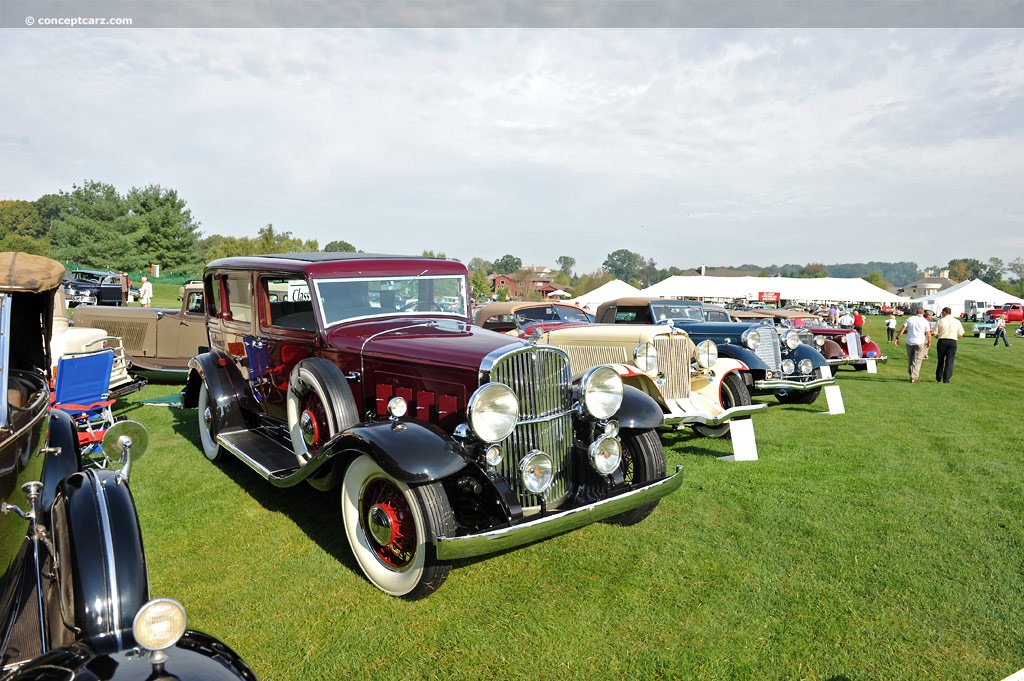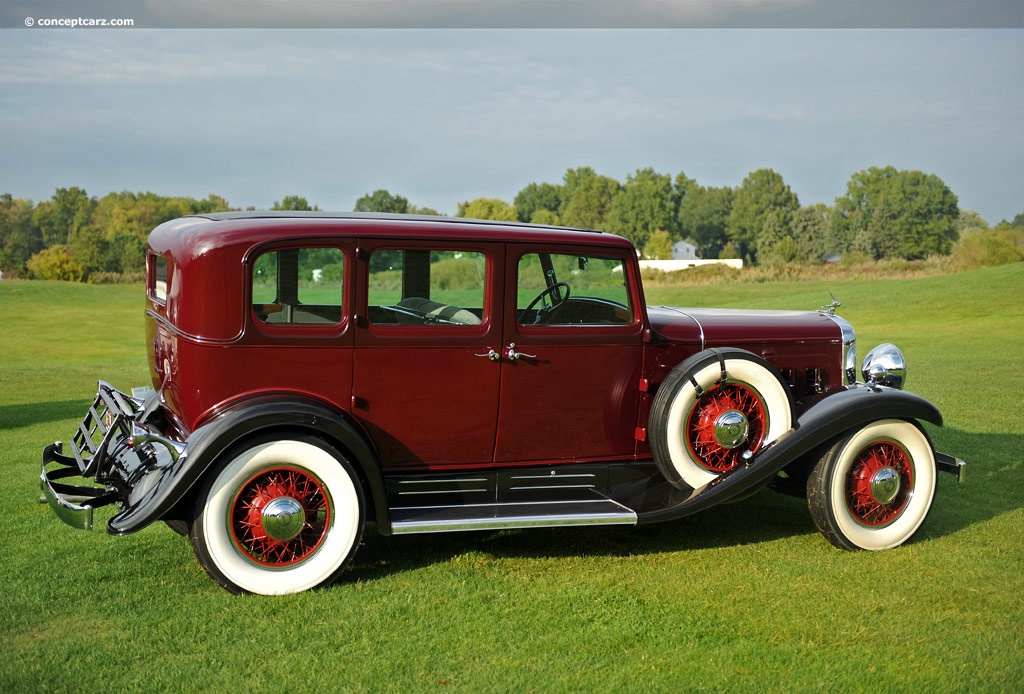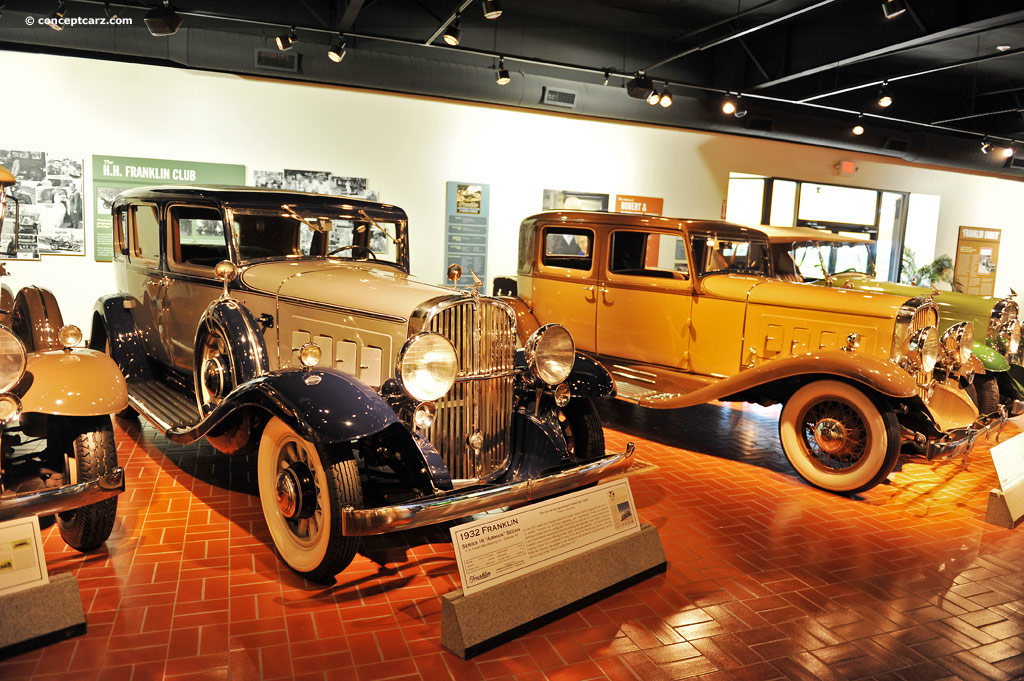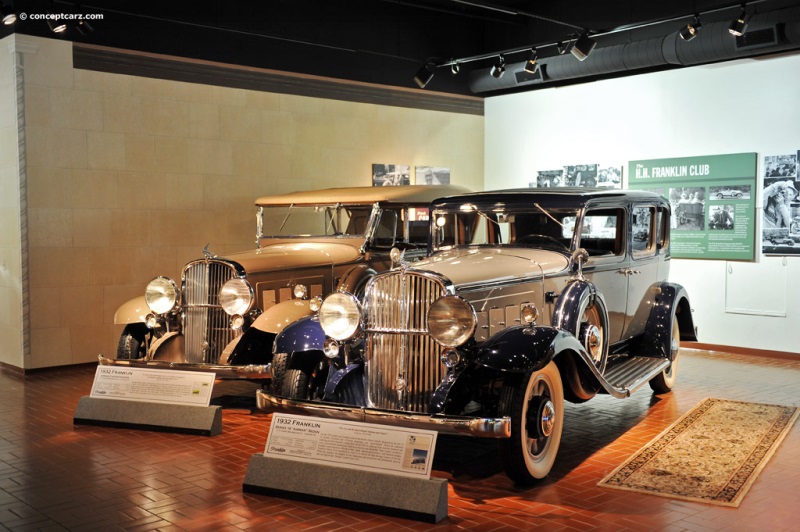The H.H. Franklin Manufacturing Company was founded by Herbert Henry Franklin and John Wilkinson with automobile production lasting from 1902 to 1934. Mr. Wilkinson was a Cornell-educated engineer and became enamored with an automobile that Wilkinson had built, investing $1,100 to finance the construction of a third prototype that would become the first car built by the newly-formed Franklin Company. Available for sale in 1902, it was the first four-cylinder car produced in the United States. 
Sedan Oxford
View info and historyMr. Wilkinson was a proponent of lightweight construction techniques which led him to forgo water cooling and radiators. He favored tubular axles and the lightest suspension components possible - selecting full-elliptic springs. The laminated ash frames were clothed with aluminum bodies. Functionality was a higher priority than beauty or ornamentation resulting in non-traditional appearances. A 'barrel-front' hood was adopted in 1904, with a simple screen at the front to allow the flow of cooling air. A front-mounted fan provided cooling air to the finned individual cylinders. Renault-style 'scuttle' hoods were later adopted, followed by a 'horse-collar' grille. Automatic spark advance was added in 1907, pressure feed lubrication in 1912, aluminum pistons in 1915, and aluminum connecting rods in 1922. Franklin vehicles were bestowed with an abundance of aluminum, more than any other domestic automaker. Cast aluminum was used for the engine block, transmission, and rear end; single cylinders were cast iron and bolted to the block.Between 1904 to 1927, the Franklin vehicle used a service brake on the transmission which slowed the drive shaft. Additionally, there was a hand lever that operated the rear wheel brakes. Before 1923, Franklin automobiles were styled by factory engineers. During the late-1910s and early 1920s, automotive styling changed considerably, and since the Franklins wore 'stodgy' styling, sales suffered. At the insistence of Los Angeles dealer Ralph Hamlin, the company retained the services of J. Frank de Causse to revitalize its appearance. The first model to emerge with de Causse's design was the Series 11. They were a radical change from the previous designs, forging the tilting 'Wilkinson Hood' in favor of a false radiator and traditional center-hinged hood. The overall design was sleek with a low profile and youthful appearance. Several new body styles emerged including the 'tandem sport', and the 'boat tail sport runabout'. The Series 11 was the first air-cooled Franklin to utilize a false radiator shutter front. The steel fins used on the engine's cylinders were replaced by copper which improved cooling and allowed for higher compression and an increase in horsepower. Styling continued to gain momentum with custom lines that included coachwork by Locke, Merrimac, Willoughby, Holbrook, Brunn, and Derham. When de Causse passed away in 1928, Raymond Dietrich became head of Franklin's styling department. The Franklin company built high-quality, durable, lightweight, unique vehicles and is best remembered as the most successful producer of air-cooled automobiles in the United States. During its 30+ years of production with over 150,000 of automobiles built, the company never made a water-cooled machine. As late as 1927, Franklin was still producing a car chassis with laminated wooden side members while using full-elliptic springs for ride comfort. Most manufacturers had abandoned full-elliptical springs by 1910, switching to semi-elliptical and 3/4 elliptical springing that provided more accurate wheel and axle location. The wooden frame was able to flex and absorb the irregularities of the road better than a metal frame, resulting in a more comfortable road. Franklin dealers would jack up opposite corners of their cars, and demonstrate to customers how the doors continued to open and close smoothly. Franklin's highest year of production was 1929 with 14,432 units built. Like many companies, Franklin became a victim of the Great Depression, ceasing automobile production in 1934 (only 360 cars were built that year). The total production of Franklin automobiles from 1902 through 1934 was 151,266 units. The Franklin engine patents were taken over by the Air-Cooled Motor Corp. whose Syracuse factory produced light horizontally-opposed aircraft engines. The Tucker automobile of 1948 was powered by a six-cylinder Franklin helicopter engine (albeit, converted to using water cooling). The 1932 Franklin Airman
On May 20-21, 1927, Charles Augustus Lindbergh made the first nonstop flight from New York City to Paris, covering a distance of 3,600 miles over 33.5 hours. His aircraft was called the Spirit of St. Louis. Although this was not the first solo transatlantic flight, it was the first non-stop transatlantic flight between two major city hubs and the longest by over 1,900 miles. Powering the Spirit of St. Louis was an air-cooled, nine-cylinder Wright J-5C Whirlwind radial engine offering 223 horsepower.
Convertible CoupeCapitalizing on this accomplishment, Franklin introduced the Airman model and gave an 'Airman' sedan to Mr. Lindbergh. The car was later donated to the Henry Ford Museum. As the 1920s came to a close, Franklin's model lineup included a 46-horsepower car resting on a 120-inch wheelbase, and a pair of 60-hp cars on either 125- or 132-inch wheelbase platforms. All had six-cylinder engines with prices that ranged from $2,160 to nearly $3,000. The shorter platform was dropped in 1930 and horsepower grew to nearly 90 hp the following year. For 1931, output increased to 100 hp, and the 125- and 132-inch wheelbase remained, with the latter offered in both standard and DeLuxe configurations (the DeLuxe was also offered with more cataloged body styles). The 1932 Franklin model lineup consisted solely of the six-cylinder, 132-inch wheelbase Airman. Body styles included a Speedster, 5- and 7-passenger sedan, coupe, club sedan, victoria brougham, limousine, Oxford sedan, and convertible coupe (the only open body style). Prices ranged from $2,400 to $2,700. In 1934, a twelve-cylinder model was added to keep up with the escalating 'cylinder wars.' The V-12 Franklin used a 144-inch wheelbase while the Airman continued to rest on the 132-inch platform. To further diversify its portfolio and attempt to appeal to a cash-strapped market, Franklin offered a 118-inch wheelbase 'Olympic' model that was priced from $1,385 to $1,500. The range-topping Twelve listed for $3,900 to $4,200. The 1932 Franklin Airman wore designs penned by Ray Dietrich. The 274 cubic-inch, side-draft, air-cooled, inline 6-cylinder engine was paired with a new synchromesh manual transmission with free-wheeling and adjustable 'Ride Control'. A new 'supercharged' forced air induction system utilized air bled from the cooling fan.
by Daniel Vaughan | Jan 2023
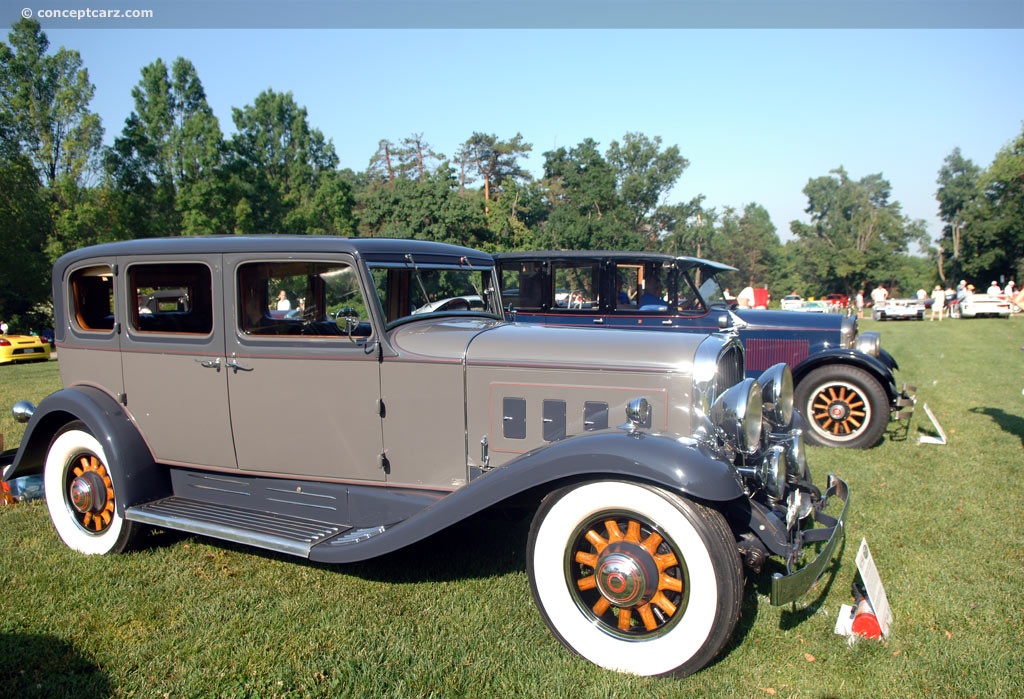
Sedan Oxford
View info and history
On May 20-21, 1927, Charles Augustus Lindbergh made the first nonstop flight from New York City to Paris, covering a distance of 3,600 miles over 33.5 hours. His aircraft was called the Spirit of St. Louis. Although this was not the first solo transatlantic flight, it was the first non-stop transatlantic flight between two major city hubs and the longest by over 1,900 miles. Powering the Spirit of St. Louis was an air-cooled, nine-cylinder Wright J-5C Whirlwind radial engine offering 223 horsepower.
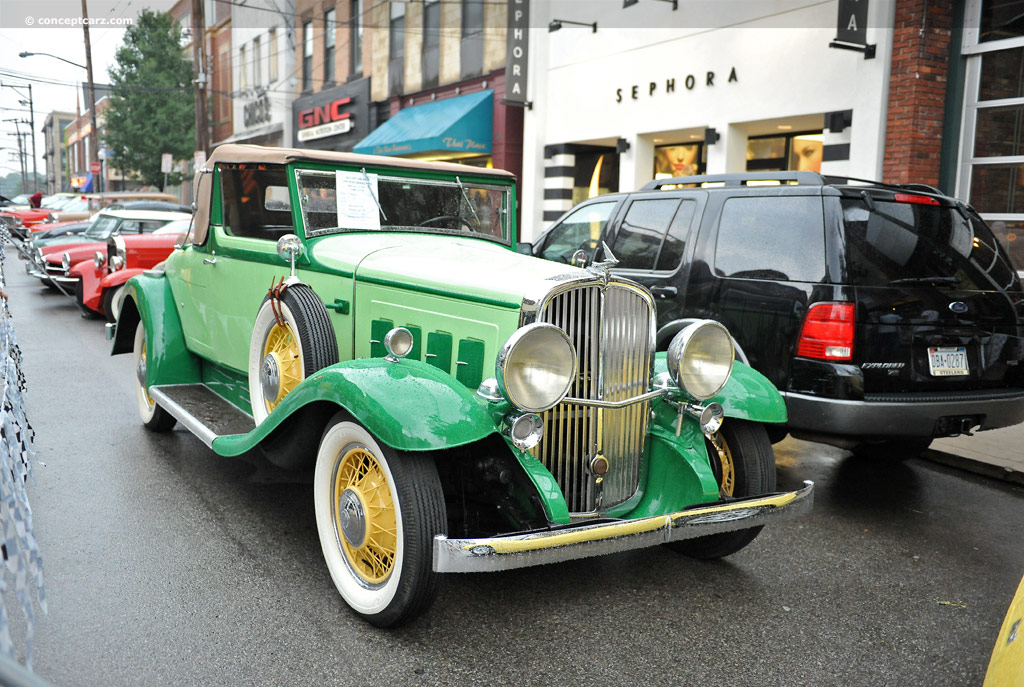
Convertible Coupe
by Daniel Vaughan | Jan 2023
Franklin
Similarly Priced Vehicles
1932 Franklin Airman Vehicle Profiles
Recent Vehicle Additions
Performance and Specification Comparison
Price Comparison
Airman Specification Comparison by Year
Year
Production
Wheelbase
Engine
Prices
Related Automotive News

Four Harley Earl Designs from the General Motors Heritage Collection - Including Legendary Y-Job and LeSabre Concepts - to be Featured at Detroit Concours d'Elegance
Four iconic vehicles from the GM Heritage Collection to be part of the Cars of Harley Earl featured class
Rarely seen together outside the GM Heritage Center
Y-Job and LeSabre, two of the most influential concept cars ever built, return to the str...

BEACH CARS STORM THE 2014 AMELIA CONCOURS d'ELEGANCE
For an event like The Amelia a class of beach cars is appropriate and ideal, said Warner. After all, when you take a break from the concours field and sit on the veranda at the Ritz-Carlton with a cool drink in front of you, you stare at the ocean...

RM Auctions Amelia Island Preview - 2014
0
RM Auctions, the worlds largest auction house for investment-quality automobiles, will hold its Amelia Island, Florida, sale on March 8th at the Ritz-Carlton.
As the official auction house of the Amelia Island Concours dElegance, RMs...

Gooding & Company Amelia Island Auction Preview
Gooding %26 Company, the auction house acclaimed for selling the worlds most significant and valuable collector cars, will hold its annual Amelia Island Auction on Friday, March 7 on the Omni Amelia Island Plantation.
David Gooding, President and founder...

63rd Pebble Beach Concours d'Elegance Names 1934 Packard 'Best of Show'
The competition showcased 248 cars, including 48 from abroad
PEBBLE BEACH, Calif. (August 18, 2013) -- A 1934 Packard 1108 Twelve Dietrich Convertible Victoria owned by Joseph and Margie Cassini III of West Orange, New Jersey, was named Best...
